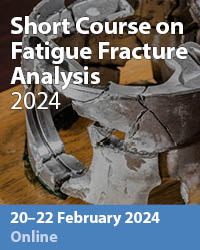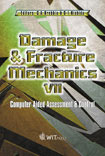A Discrete Crack Analysis For High Fiber Volume Fraction Cement-based Composites: Part 2, Numerical Implementation
Price
Free (open access)
Transaction
Volume
37
Pages
Published
2002
Size
480 kb
Paper DOI
10.2495/DM020441
Copyright
WIT Press
Author(s)
M Boulfiza & N Banthia
Abstract
A micromechanics-based model has been developed in part 1 of this paper to account for the effect of fibers on stress transfer in fiber reinforced cementitious composites (FRC). Unlike most models in the literature, this micromechanical model assumes that cracking plays a major role in the composite’s behavior, starting at the point of departure from linearity up to ultimate failure and not only in the post-peak zone. The model which deals with both the strain hardening as well as the strain softening regimes, is implemented here into a finite element code, to allow the prediction of the response of high fiber volume fraction as well as low fiber volume fraction FRC materials. The model’s predictions for pitch-based carbon fiber reinforced beams with two fiber lengths (3mm and 10mm) and different high fiber volume fractions have been found to be in good agreement with experimental results. 1 Introduction The stress-crack opening displacement \“constitutive law” that has been developed in part 1 of this paper provides a link between the behavior of the different components making up the material, such as fiber, matrix and fiber- matrix interface, and its resistance to fracture. This link which leads to a better understanding and quantification of the major mechanisms underlying the behavior exhibited by cement composites should allow the tailoring of cementitious composites for specific needs, such as designing high strength and/or high ductility materials. True evaluation of cement composites
Keywords





